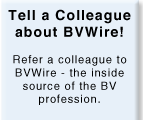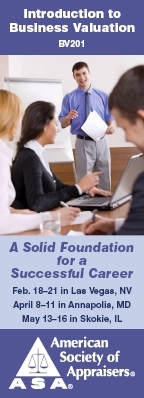
| You could already be expert witness, and not know it Until the economy fully recovers, litigation consulting is looking like a solid growth opportunity these days. In a prime example of how two leading BV experts continue to mine their referral lists, Chris Mercer (Mercer Capital, Memphis) and David Adams (Adams Capital, Atlanta) spoke to the Southern Federal Tax Institute in Atlanta last week. Joining them were David Aughtry and Hale Sheppard, both local tax litigation and planning attorneys with Chamberlain Hrdlicka. “The lawyers’ main theme was that we are all likely to be testifying one day, as financial experts or fact witnesses,” Mercer reports. The attorneys also emphasized that litigation experts, in particular, are subject to rigorous examination regarding their qualifications and credentials, their experience in the specific industry, and their prior courtroom testimony. Even if appraisers deliberately choose a non-adversarial practice, sooner or later, every expert report will receive the same heightened scrutiny—by the IRS examiner, the divorcing spouse or disgruntled employee—so Aughtry likes to subject his expert witnesses to the toughest possible cross-examination. “I can attest to that particular practice of his!” Mercer says. Mercer and Adams each worked up a “Top 5” list of what it takes to launch and lead a litigation practice. For instance—be as selective with your lawyers as they are with you. “When experts work on a case, they are putting their personal and firm reputations in the lawyers’ hands,” Mercer says. “Inexperienced litigators can make their experts look really bad.” Once retained, try talking to the opposing expert, Adams says. “If appraisers can’t agree on a final conclusion, they can at least coordinate methodology and data gathering, stipulate to key assumptions, and indentify/quantify any remaining areas of disagreement.” When the parties see a narrower range of opposition, they may more readily reach settlement. For all ten best practice tips—and a complete overview of what the top litigators want and expect from their financial experts (from BVR’s recent Divorce Summit in Chicago), be sure to read the December 2009 Business Valuation Update™. Butler/Pinkerton Calculator adds Canadian market data Last Friday we flipped the switch on the Butler Pinkerton Calculator™ (BPC) so that it now accepts Canadian stock tickers and includes the Toronto Stock Exchange (TSE) as a market proxy (S&P/TSX Composite). This adds another tool for Canadian and cross-border appraisal work when determining the total cost of equity (TCOE) and company-specific risk for valuation engagements. Users simply select the TSE as a proxy on the homepage of the BPC, and then include “.TSX” after each entered ticker to ensure they are still pulling tickers from the Canadian markets. To learn more, visit the Butler/Pinkerton Calculator, TCOE and Public Company Specific Risk Calculator ™ and get started today. Damodaran at ASA: rethink fundamentals In mid-September 2008, Professor Aswath Damodaran (NYU Stern School of Business) believed “I could think through any valuation problem.” By the end of October, he told last week’s ASA Advanced Business Valuation Conference, during his two-hour keynote address, “I didn't know the first thing about valuation…the current economy reminds us why we have an equity risk premium.” The financial crisis challenged many of Damodaran’s longstanding beliefs, including: Free materials from total beta debate available for ASA members Congratulations to the American Society of Appraisers (ASA) for gathering over 500 business appraisers, valuation analysts, financial and legal advisors to its Advanced BV conference last week. In the Society’s weekly E-Letter (Oct. 21, 2009), ASA BV Committee Chair John Barton offers free materials to those who didn’t travel to Boston. “Dr. Damodaran and Dr. Christopher Tofallis (University of Hertfordshire) bravely joined a panel on Total Beta and went tiptoeing down the third rail of specific risk with Peter Butler, Larry Kasper, and moderator Roger Grabowski,” Barton adds. “Estimating specific risk is one of the more subjective areas of what we do. The panel discussion showed that sometimes the progression of best practice can be a painful process. Kudos. . . to Professors Tofallis and Damodaran for providing context and good counsel to the profession [while] we consider ways to make our numbers more objective.” Since virtually all business appraisers encounter specific-company risk in every valuation assignment, the ASA-BV Committee has posted the materials from this panel to its website (ASA password required). “I urge everyone to download them and start reading,” Barton says. “It is not light material, but it is nonetheless necessary.” New AICPA survey says members delaying IFRS preparation When the financial crisis hit, the SEC sidelined its review of IFRS implementation to focus on managing the Wall Street fall-out and the Washington response. After a nine-month delay, Chair Mary Schapiro recently announced that the agency would revisit its proposed “roadmap” for adopting the international accounting standards by 2014, hoping to provide follow-up in the next month or two. (See Schapiro Says SEC Will Discuss Transition to IFRS This Fall.) Similarly, the FASB and IASB have put IFRS convergence back on their current joint meetings agendas. As a result, nearly two-thirds (62%) of public-company CPAs say they will delay preparing for IFRS until the SEC sets a date certain for U.S. adoption, according to a new AICPA member survey. “Most CPAs believe the U.S. should move toward IFRS and they are looking to the SEC for leadership and direction,” commented Arleen Thomas, the Society’s V.P. of member competency, in a press release last week. Accordingly, at least half (50.6%) of survey respondents say they will need relevant IFRS knowledge within the next one to three years; a proactive 8% say they need more knowledge now. Overall, a clear but close majority of AICPA members (53.6%) supports IFRS adoption by U.S. public companies. Of those, 14.1% support an SEC mandate of IFRS, but more than twice as many (39.5%) would want mandatory IFRS only after U.S. and international standards are further converged. A minority (18%) believe the SEC should not mandate use of IFRS but rather allow IFRS as an option for U.S. companies. To access the complete survey, click here. Your immediate IFRS input wanted In the meantime, two well-known academics with opposing views on IFRS implementation are soliciting immediate input on their 12-question IFRS survey. Tom Selling, author of The Accounting Onion and a former SEC Academic Fellow, and Pat Walters, currently at Fordham Univ. and a former senior V.P. at the CFA Institute) would ideally like the responses this week. The FEI Financial Reporting Blog (Oct. 22, 2009) comments how important this survey is: “FEI is impressed that Selling and Walters, by working together and yet holding opposing views…aim to present a balanced survey instrument, rather than a survey designed to obtain a one-sided result.” M&A market slowly recovering, with good prospects for 2010 In particular, the greatest increase in transactions took place in the lowest and highest value segments. Deals with an enterprise values less than $50 million increased 10.4% from the 2Q09 to 3Q09, while transactions over $250 million increased by 80.4% over the same period. The “dramatic” increase in the latter segment is related to the substantial increase in strategic transactions, according to PCE. Compare these results to transactions for companies with values between $50 million and $100 million, which decreased 3.6% from 2Q09. Likewise, transactions between $100 million and $250 million dropped 20.9% during the same time frame. “While [overall] activity continues to increase, there is still a chasm between buyer and seller value expectations,” Rosendahl reports. With a little more time, however, buyers and seller should find the necessary clearing price and the outlook for M&A should brighten. “Expectations for the 4Q09 and 2010 are improving as strategic and financial acquirers aggressively seek out new targets. Sellers are also carefully reviewing their alternatives as more business owners contemplate their exit strategy. The confluence of these factors will lead to a substantial increase in transactions, but the effects most likely won’t be seen until we are further into the economic recovery.” How Deloitte builds its wealth planning consultancy Deloitte has just published its annual wealth planning guide: The Essential Tax and Wealth Planning Guide for 2010 - A Year-round Resource. Geared toward navigating the current economic uncertainty. The 22nd version of the guide discusses:
New for 2010, the guide includes special sections highlighting planning issues for private businesses and investors in real estate, private equity and hedge funds, and incentives for individual taxpayers to go "green." To download, click here.
To ensure this email is delivered to your inbox, Copyright © 2009 by Business Valuation Resources, LLC
|
|
|



